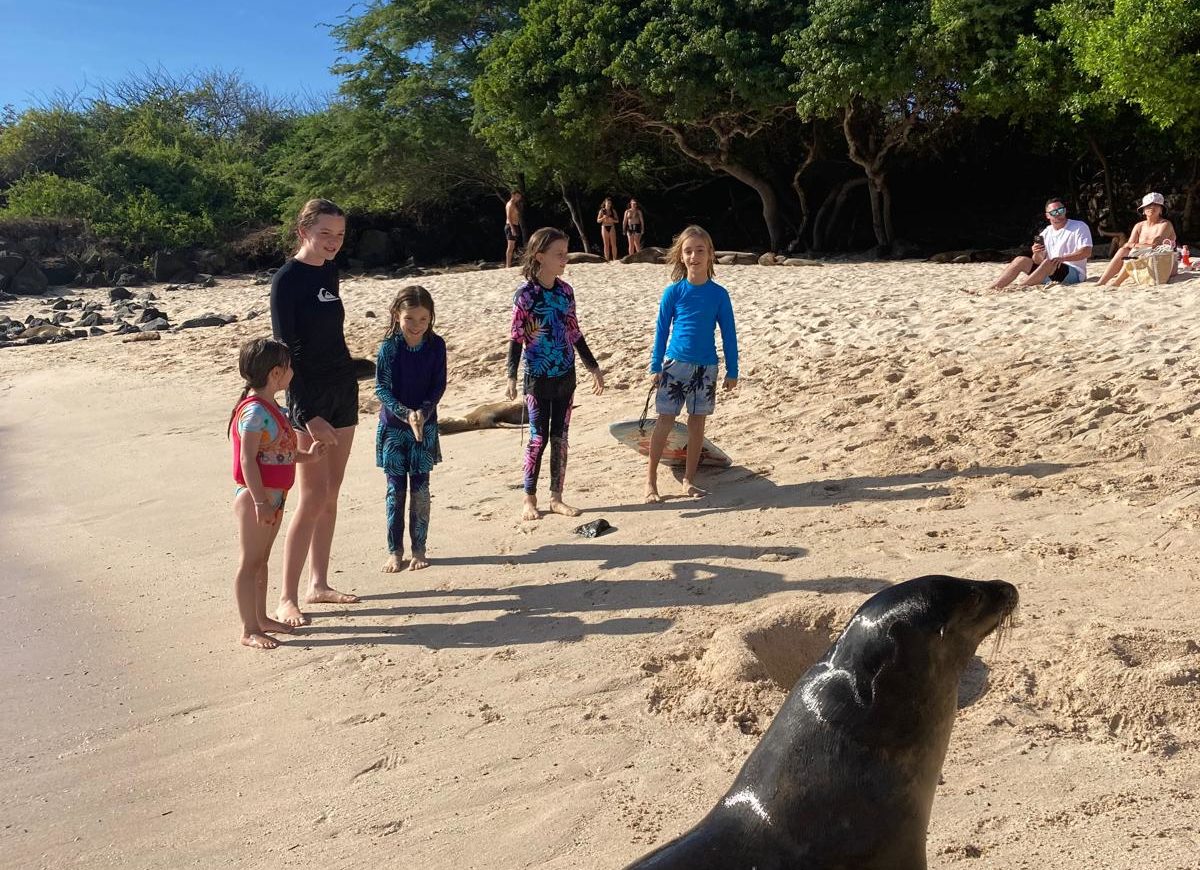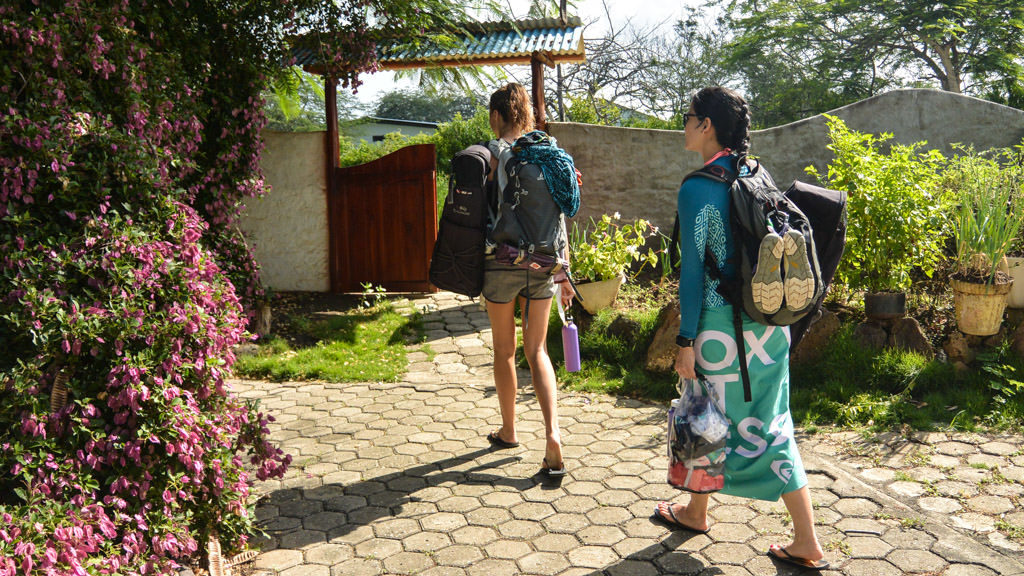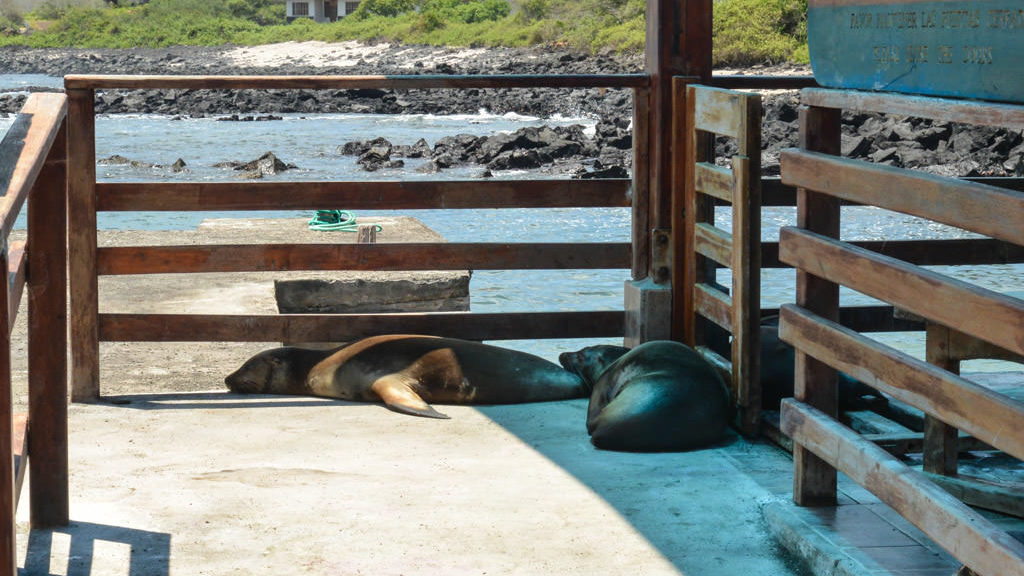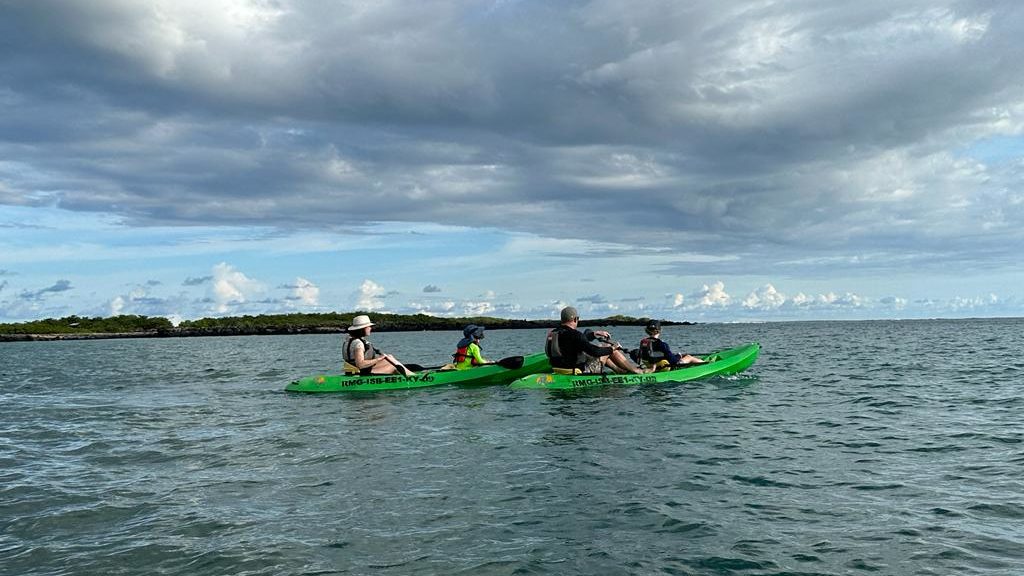August 9, 2025
How to Prepare Young Travelers for a Meaningful Trip

Traveling with kids or teens isn’t just a fun family adventure, it’s a chance to help them see the world in a whole new way. In a place as unique as the Galápagos, every sight, sound, and experience can really stick with them. But meaningful travel doesn’t just happen on its own, it starts with a little preparation.
The Galápagos Islands, with their fearless wildlife, delicate ecosystems, and unique local culture, are an amazing place to spark curiosity, empathy, and a real appreciation for nature. Prepping kids before the trip helps them enjoy it more and understand why the Galápagos is so special and worth protecting.
This guide offers practical tips, age-specific insights, and helpful ideas to help you prepare kids and teens for a meaningful and unforgettable Galápagos adventure, before you go and while you’re there.
1. Pre-Trip Conversations: Setting the Right Mindset
Before you even board the plane, start talking about what makes the Galápagos so special, and why it’s worth protecting. Kids are much more likely to follow rules and engage respectfully if they understand why those rules exist.
Topics to cover:
- Wildlife and conservation: Talk about how animals in the Galápagos, like sea lions, giant tortoises, and marine iguanas, aren’t afraid of humans because they’ve never been hunted. That’s why it’s so important to give them space, avoid touching or feeding them, and observe from a respectful distance.
- Responsible travel: Discuss small but meaningful habits like using reusable water bottles, wearing reef-safe sunscreen, and staying on marked trails. These habits protect the environment and set a positive example for other visitors.
- Cultural awareness: Talk about the local communities in the islands, how they fish, live, and work alongside nature. Highlight the importance of supporting local communities and respecting their customs.
- Make it interactive: Watch short nature documentaries or videos about Galápagos wildlife. Let kids “meet” the blue-footed booby or see how sea turtles nest on the beach. The more they know, the more excited and engaged they’ll be.
These discussions build both excitement and awareness. Conversations ahead of time create a sense of respect and responsibility, while also preventing surprises.
2. Teaching Rules and Responsibilities (by Age)

Kids of different ages process rules in different ways, and that’s totally normal. Which is why tailoring your approach makes the learning more fun and much more effective. The goal is to help them see travel rules not as restrictions, but as a way to protect the places and wildlife they’re so excited to experience.
For kids (7–12 years old): Keep it simple, visual, and fun.
Younger children learn best through stories, play, and repetition. Instead of explaining rules in abstract terms, use relatable examples:
- “We’re guests in the sea lions’ home, so we stay on the paths and let them come to us if they want to say hi.”
- “Imagine if someone walked into our house without asking, how would we feel?”
Tips:
- Make it a story adventure: Frame the outing as a nature quest where they’re wildlife explorers on a quiet mission. For example, say, “Let’s pretend we’re nature detectives, quiet and careful so we don’t scare the animals away.”
- Use visuals: Show them photos or short videos of the animals they’ll see, and talk about how to behave around them.
- Give them small responsibilities: such as carrying a reusable water bottle or helping pack reef-safe sunscreen, so they feel like active participants.
For teens (13+ years old): Encourage critical thinking.
Teens are more capable of understanding the bigger picture. Explain why these rules exist by connecting them to real-world issues:
- Talk about the impact of tourism, how plastic waste harms marine life, or why invasive species threaten native habitats.
- Encourage them to ask questions about what they see. For instance, “Why do you think sea lions aren’t afraid of humans here?”
- Involve teens in decision-making, this makes them feel ownership of the experience.
Tip: For more expert advice on traveling with teenagers, check out this insightful article: Traveling with Teenagers: Advice from a Psychologist.
3. Get Them Involved in Planning & Packing

When kids and teens feel like they’re part of the process, they’re more invested in the journey.
- Show them the itinerary: Highlight activities they’ll love, like snorkeling with playful sea lions or hiking lava fields. Let them pick one or two activities they’re most excited about.
- Encourage independence in packing: Give them a list of essentials (hat, quick-dry clothes, reusable bottle, swimsuit) and let them choose colors or styles.
- Teach eco-friendly habits early: Teach them why it’s important to bring reusable gear, like a refillable water bottle or eco-friendly snacks, to reduce single-use plastics in sensitive areas like the Galápagos.
4. Build Curiosity and Confidence During the Trip

Once you’ve arrived, keep the momentum going by giving kids a role in the adventure. The best travelers, young or old, are curious, flexible, and open to learning. By fostering these qualities before and during the trip, you help kids experience the Galápagos with deeper appreciation and wonder.
Encourage cultural respect: Show how local communities live in harmony with nature. Before visiting any sites, help kids understand that people here play a vital role in protecting the islands. Talk about simple, respectful behaviors, like greeting locals with a smile, asking before taking photos, and showing genuine interest in how islanders care for their unique environment.
Make room for questions: Questions are a sign of engagement and curiosity. Let kids know it’s okay to ask the guide questions, they’re there to help!
Let them lead: Give kids a “job” on the trip: the wildlife spotter, the family photographer, or the group’s checklist keeper. Small responsibilities give them purpose and keep them engaged.
Use a travel journal: Bring a notebook and some colored pencils. Encourage kids to draw the animals they see, jot down fun facts, or write about their favorite moment of the day. Journaling helps them process experiences and gives them a unique souvenir to take home.
Need ideas? Check out this guide to kids’ travel journals by Travelynn Family, which offers great tips on making journaling fun and creative for kids.
Final Thoughts: More Than Just a Vacation

When kids arrive in the Galápagos prepared, with an open mind, a sense of wonder, and an understanding of their impact, they experience something much deeper than a vacation. They connect. They learn. They grow.
And for families who join a 8-day Galápagos Family Adventure, the experience is carefully crafted to support exactly that. With certified naturalist guides, kid-friendly activities, and a respectful approach to travel, it’s more than a trip, it’s an opportunity to help your child build lifelong memories and values rooted in empathy, responsibility, and a deep connection to the natural world.
Ready to plan your family’s next adventure? Let’s make it meaningful.
